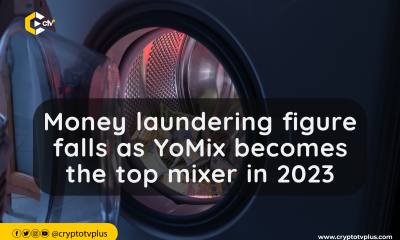FEATURED
Overcoming obstacles in Web3 social media: the Amplica Labs’ story

Decentralized social media is transforming the social networking landscape through its innovative economic model.
It is characterized by user rewards, decentralization, censorship resistance, privacy enhancements, and more. Prominent examples include Friend.Tech, Steemit, and Damus.
However, despite the immense potential, creating, launching, and achieving success with such a product comes with various challenges and hurdles.
This was the central theme of the presentation delivered by Enddy Dumbrique, Senior Blockchain Engineer at Amplica Labs, during the Sub0 conference.
A Vision for the Future
Enddy Dumbrique outlined the core mission of Amplica Labs: to create infrastructure and tools that will drive the evolution of social media applications.
Amplica Labs plays a significant role as a core contributor to the Frequency Parachain, a platform dedicated to building a scalable, decentralized messaging network.
The central question that guided Amplica Labs’ work was: “How can user control be brought to Web2 social media users in the Web3 era?”
To answer this question, he said that the team embarked on a journey to build a unique social media protocol, address challenges, and craft an innovative economic model.
Building a protocol with purpose
When crafting its social media protocol, the engineer noted that Amplica Labs adhered to six guiding principles: user ownership, user privacy, authenticity, portability, usability, and extensibility.
These principles formed the foundation upon which their solution was built.
Initial attempts at prototyping on Ethereum revealed high transaction fees, prompting a shift to explore sidechains.
However, the team recognized that sidechains did not fundamentally address the issues they sought to solve.
This realization led them to delve deeper into research and experimentation with various blockchains, eventually landing on Polkadot as an ideal platform for their vision.
Economic Model Principles
Speaking further, Enddy revealed the three core elements Amplica Labs intimated for its economic model. Delegation Model which allows users to delegate authority to service providers, enabling batch transactions on their behalf.
The beauty of this model is that users can revoke access at any time without incurring additional costs, reducing wallet interactions and complexity.
The next he mentioned is the Data Transaction Model. Here, transactions are optimized for data-driven interactions typical of social media. The advantage of this is efficient data processing.
The capacity staking model is the last principle. With this, users can acquire capacity either through delegating to a network or by staking tokens. This ensures predictable and stable pricing for transactions, fostering scalability and stability.
Why Polkadot
The speaker also added that the reason for choosing Polkadot is that its architecture provided the ideal canvas for Amplica Labs to implement its unique economic model.
By harnessing the security provided by the Polkadot relay chain, Amplica Labs could focus on building the economic model that perfectly suited their vision.
Amplica Labs introduced the concept of capacity to manage transaction stability and pricing. Capacity allows users to transact at a fixed cost, and it is replenished periodically, reducing volatility. Users can acquire capacity by staking tokens or having others stake on their behalf.
Additionally, he said that to onboard Web2 users seamlessly to Web3, Amplica Labs employs a dual account model. Users can interact with the system using accounts that don’t require tokens, known as MSA (Message Source Account) accounts.
These accounts allow users to experience the benefits of decentralized social media without the speculative aspect associated with tokens.
The delegation model, capacity staking, and the dual account system collectively empower both users and applications. Users gain control and access to social media without the burden of tokens, while applications can efficiently process data-driven transactions and scale their operations.
Read also; Invarch Network CTO discusses Saturn simplifying Multisig solutions
























